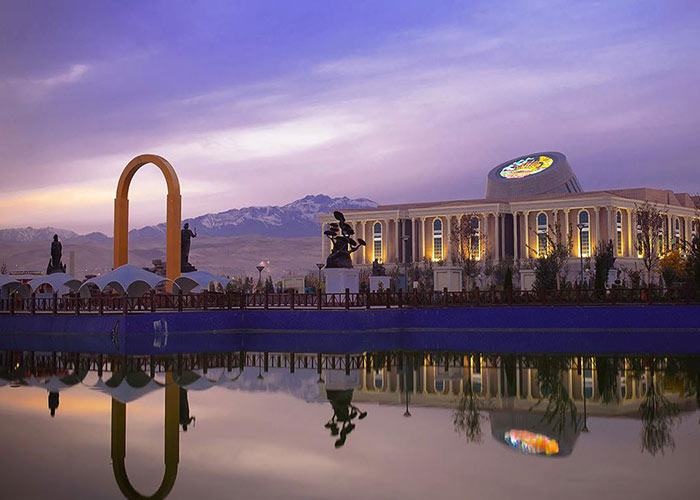There were villages called Sary Asiya and Shahmansur, which formed a small town. Because it is in these villages that the merchants have stopped visiting the merchants. In 1925, the town's first enterprise began construction of new houses. The city grew and developed rapidly.
In 1939, more than 80,000 people lived here. They were mostly newcomers.
Dushanbe is a center of cultural and scientific life in the Republic of Tajikistan. Locals call it the city of students. Since being built there, it has done everything to raise the intellectual level of young people.
In Dushanbe, there are a bunch of specialized schools, laboratories, and institutes.
In addition, local scientists every day make a great contribution to science (chemistry, zoology, botany, and economics).
Astronomers were even able to gain recognition abroad for their scientific work in the fields of comet and meteor astrophysics.
A purpose-built Institute of Seismology continues to work on techniques in the area of building construction. This is to ensure that the institutions are able to withstand strong earthquakes.
Dushanbe culture does not lag behind science. In addition, the city is not deprived of a large number of theaters, museums, and various cultural centers.
Theaters were erected, such as the Tajik Academic Theatre of Opera and Ballet. Sadridina Ayni Opera and Ballet Theatre, named after S. Aini State Youth Theatre. M. Vahidova, Dushanbe Puppet Theatre, and the State Russian Drama Theatre. V. Mayakovsky
A very fascinating exhibition at the museum in Dushanbe. For instance, in the National Museum, you will learn combined with a collection of art schools in Asia and Europe. In addition, at the National Museum of Antiquities in front of you, an opening exhibition of archaeological materials archaeologists not only in Tajikistan but also in the Russian Federation collected that. It was here that the famous worldwide statue of "Buddha in Nirvana" was born. It is considered the biggest ancient Buddhist monument in the world.
Annually, increasing cash investments are allocated to infrastructure development, culture, science, tourism development, and hotel business.
Many travelers are interested in certain areas of the young city. In the central part of the preserved buildings that were built in the 30s, as well as in the city, there are whole areas where houses have been built in the traditional style.
The city has several parks, and the streets are decorated with crowns of trees and flowers. At the zoo, visitors to the city can meet animals from almost any corner of the globe.
Our travel organization "Orient Mice" is glad to provide you with transportation and expert guides who will implement a memorable historical and cultural tour of the capital of the Republic of Tajikistan.
In 1939, more than 80,000 people lived here. They were mostly newcomers.
Dushanbe is a center of cultural and scientific life in the Republic of Tajikistan. Locals call it the city of students. Since being built there, it has done everything to raise the intellectual level of young people.
In Dushanbe, there are a bunch of specialized schools, laboratories, and institutes.
In addition, local scientists every day make a great contribution to science (chemistry, zoology, botany, and economics).
Astronomers were even able to gain recognition abroad for their scientific work in the fields of comet and meteor astrophysics.
A purpose-built Institute of Seismology continues to work on techniques in the area of building construction. This is to ensure that the institutions are able to withstand strong earthquakes.
Dushanbe culture does not lag behind science. In addition, the city is not deprived of a large number of theaters, museums, and various cultural centers.
Theaters were erected, such as the Tajik Academic Theatre of Opera and Ballet. Sadridina Ayni Opera and Ballet Theatre, named after S. Aini State Youth Theatre. M. Vahidova, Dushanbe Puppet Theatre, and the State Russian Drama Theatre. V. Mayakovsky
A very fascinating exhibition at the museum in Dushanbe. For instance, in the National Museum, you will learn combined with a collection of art schools in Asia and Europe. In addition, at the National Museum of Antiquities in front of you, an opening exhibition of archaeological materials archaeologists not only in Tajikistan but also in the Russian Federation collected that. It was here that the famous worldwide statue of "Buddha in Nirvana" was born. It is considered the biggest ancient Buddhist monument in the world.
Annually, increasing cash investments are allocated to infrastructure development, culture, science, tourism development, and hotel business.
Many travelers are interested in certain areas of the young city. In the central part of the preserved buildings that were built in the 30s, as well as in the city, there are whole areas where houses have been built in the traditional style.
The city has several parks, and the streets are decorated with crowns of trees and flowers. At the zoo, visitors to the city can meet animals from almost any corner of the globe.
Our travel organization "Orient Mice" is glad to provide you with transportation and expert guides who will implement a memorable historical and cultural tour of the capital of the Republic of Tajikistan.




